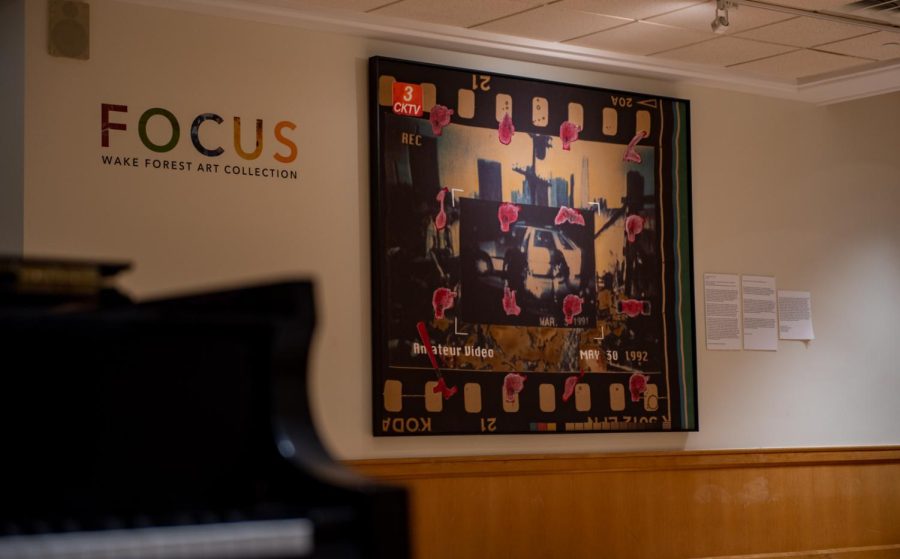For Features, Christa Dutton investigated the Mark H. Reece Collection of Student-Acquired Contemporary Art.
Art among us
April 12, 2023
The student art-buying trip is one of the most unique experiences Wake Forest has to offer. It all started in 1963 when Wake Forest’s Dean of Men and College Union Adviser Mark Reece and faculty members Ed Wilson and Allen Easley drove to New York with two students who they tasked with purchasing pieces of contemporary art. Wake Forest did not even have an art department at that time.
Since then, a small group of students has continued the tradition and traveled to New York City every three years during spring break to purchase contemporary art for the university’s collection with university funds. There is no other program like this at a university in the country, according to University Art Collections.
Wake Forest gives the students $100,000 with only one instruction: buy art that “reflects the times.” Students spend their days in the city visiting galleries and spend their nights deliberating their findings. They debate which works to buy, evaluating their artistic value as well as how the work will fit into the collection. They consider factors like which artists they want to be featured. The last buying trip cohort only purchased work from female artists or artists of color to add more diversity to the collection. Before that trip, less than five percent of the collection was from artists of color.
Students also have to talk money. If they buy one piece, that may mean they have to cut another to stay within their budget. They also have to consider shipping costs; it’s easier to ship a painting than it is a sculpture.
Formerly known as the Student Union Collection of Contemporary Art, the works purchased on the buying trip are now in a collection called the Mark H. Reece Collection of Student-Acquired Contemporary Art. It is Wake Forest’s premier art collection and will celebrate its 60th year in 2023. The collection now has more than 200 pieces by more than 100 artists, ranging in media from paintings to print to photography to sculptures. The collection is a time capsule — documenting the art that Wake Forest students thought reflected their time.
Most of the collection is now displayed in either Reynolda Hall or Benson University Center. These pieces are fine art and would typically live in a gallery or museum, but at Wake Forest, the art lives among the students.
The art’s location poses an interesting question. What is a piece of art’s relationship to the space it occupies? How do you balance the accessibility of art with the preservation and sacredness of art?
Wake Forest also asked those questions and sought answers. In 2016, former Vice Provost Lynn Sutton initiated a report of the Hanes Gallery, stArt Gallery and the University Art Collections. Dan Mills, an art museum director at Bates College, visited Wake Forest to conduct the review, and he discovered that one of the biggest challenges for Wake Forest would be the care of the Reece Collection (then called the Student Union Collection). His report said the works were of “high scholarly, aesthetic, historic and monetary value,” being worth well over $4 million but were displayed in “insecure, unstaffed and high light level spaces.”
He noted that the university would have to grapple with the school’s long tradition of public art with the need to provide proper stewardship. Resolving this tension doesn’t come without its challenges — challenges that are both practical and philosophical.
